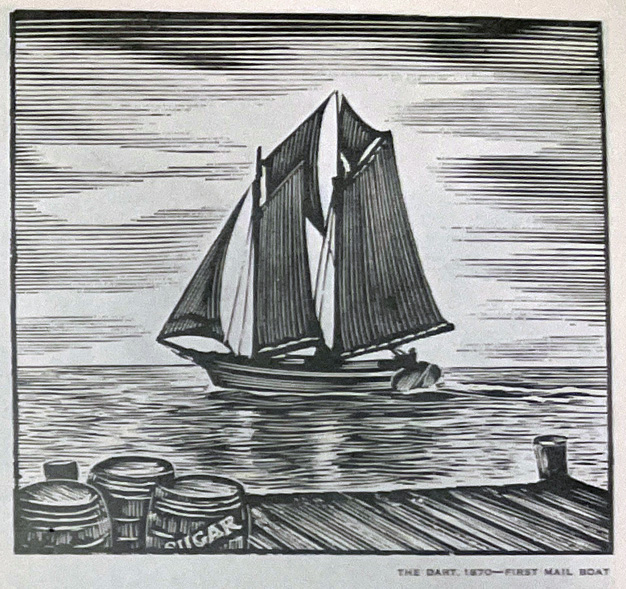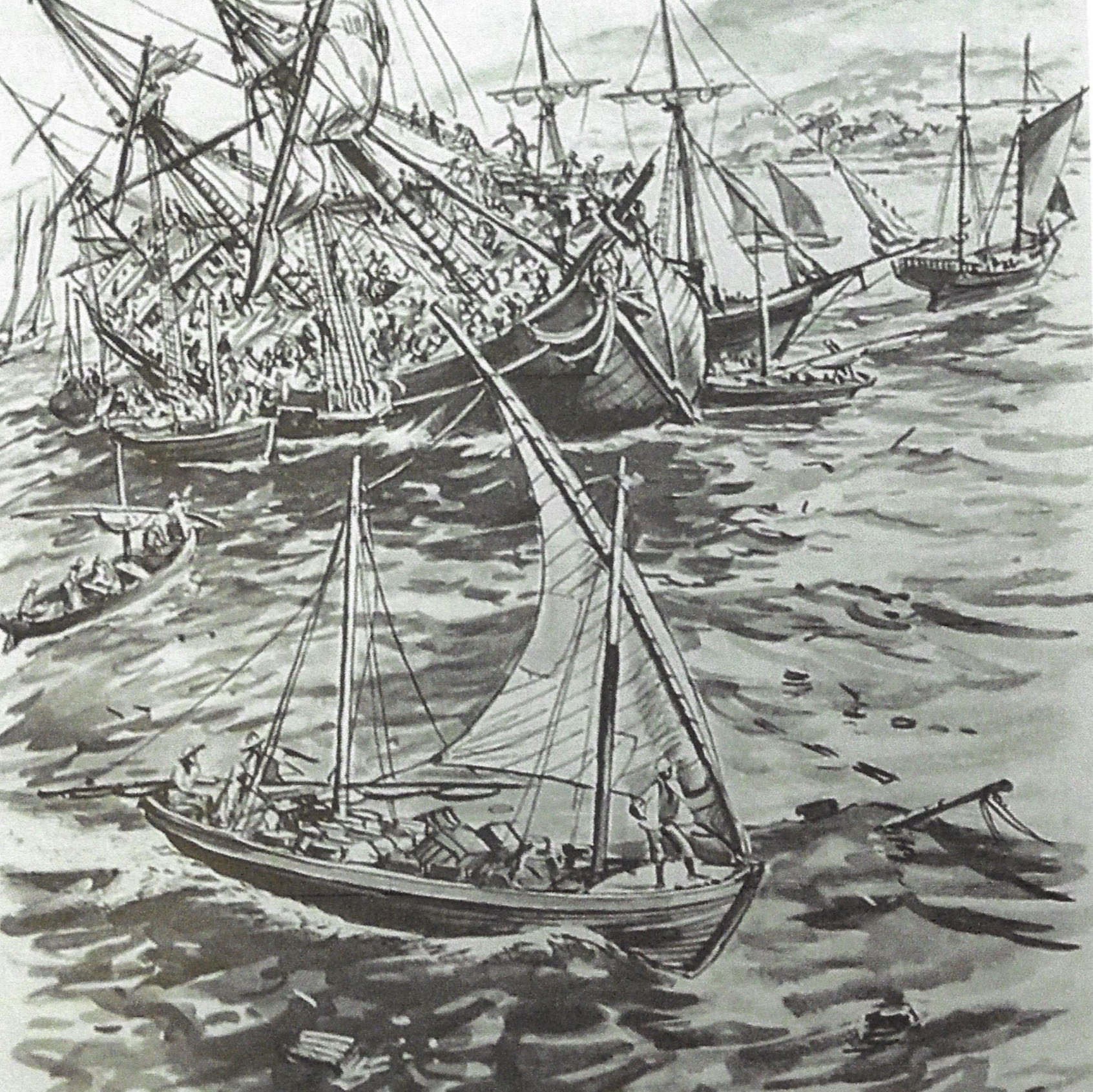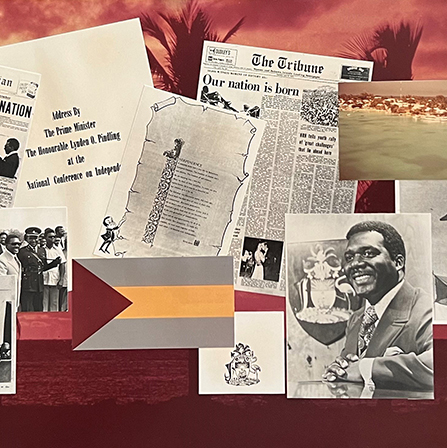Winslow Homer (1836-1910)
Sep. 22, 2022
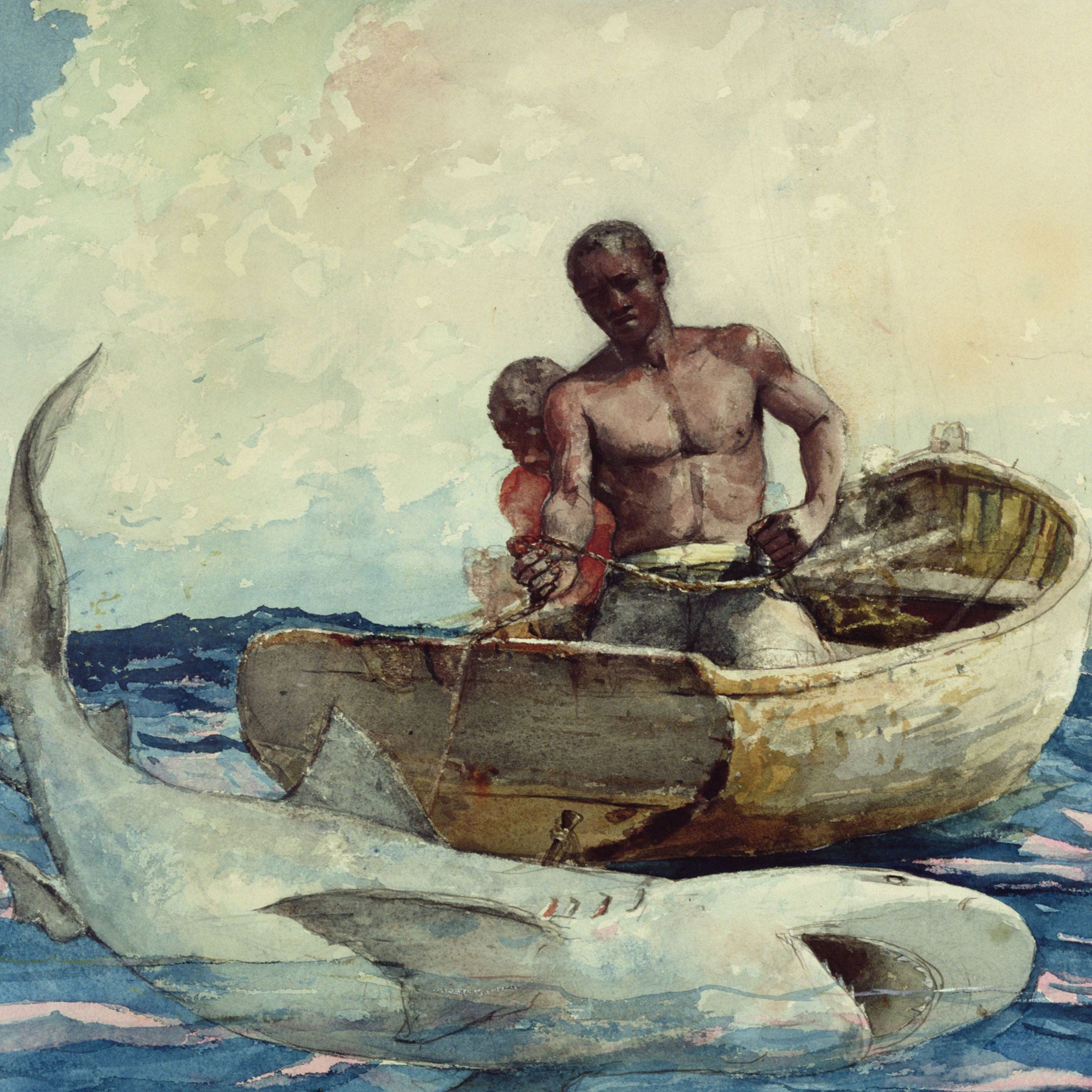
The Century Magazine introduced the Bahamas to the world in 1887 with the article entitled “A Midwinter’s Resort” with illustrations from Winslow Homer.
Winslow Homer (1836-1910) was one of the most famous 19th century American painters, illustrator and printmaker. In 1884, Homer received a commission from The Century Magazine to illustrate an article called “A Midwinter’s Resort” about Nassau’s burgeoning reputation as a winter destination.
During his two-month stay, during which only 150 visitors arrived in Nassau, Homer painted more than thirty watercolors including island architecture, sponge and coral fishing, fruit trees, and the unusual features of the landscape. Winslow Homer was the first to introduce the world to the beauty of the Bahamas.
Rest - 1885
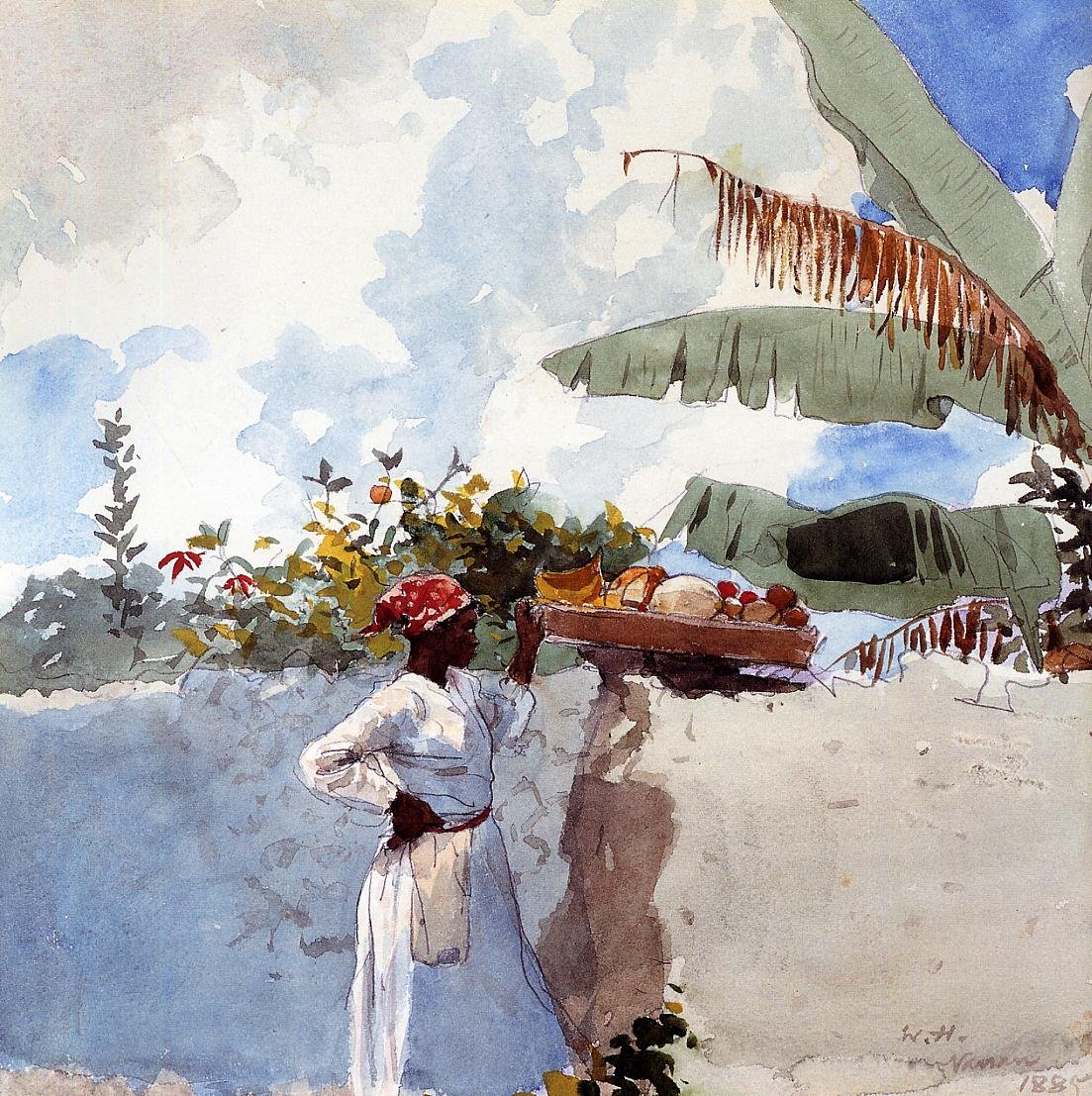
Homer’s first trip to the Bahamas is commonly believed to have been precipitated by a commission to illustrate an article for Century Magazine. Yet the details of this assignment remain unsubstantiated and were never mentioned by the artist. It seems possible that Homer visited the islands of his own volition and that his images were linked to the article after the trip. Titled “A Midwinter Resort,” the essay touted the pleasures of the Bahamas for travelers from the United States. Women carrying baskets of fruit on their heads were a popular trope in tourist images of the Bahamas. This watercolor of a vendor who pauses on her journey to market, setting down her produce-filled tray atop a characteristic wall, was one of the works reproduced in the magazine.
A Garden in Nassau - 1885
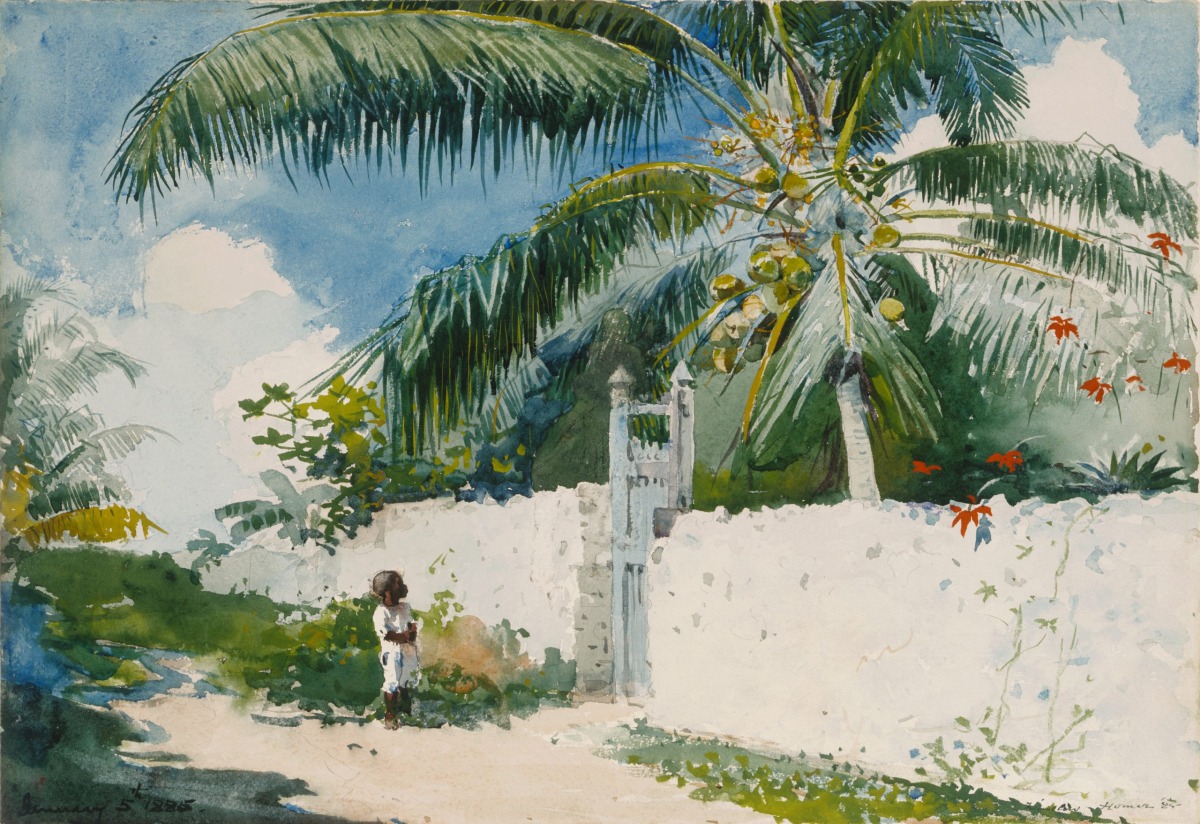
In the years following the U.S. Civil War, the Bahamas sought to revive their economy with tourism. Hoping to attract wealthy visitors, especially from the nearby United States, advertising campaigns celebrated the islands as picturesque tropical paradises and promoted the healthful, restorative climate as a refuge from winter weather up north. Homer’s vibrant watercolor, intended for viewers back home, celebrates the lush, verdant landscape while also suggesting the exclusion of Black islanders from aspects of Bahamian society. The coral and limestone wall, traditionally used to enclose the gardens of Nassau’s private residences, separates the child from the landscape beyond. Homer originally included two additional figures attempting to climb over the gate to retrieve coconuts but later edited them out.
Native Hut at Nassau - 1885
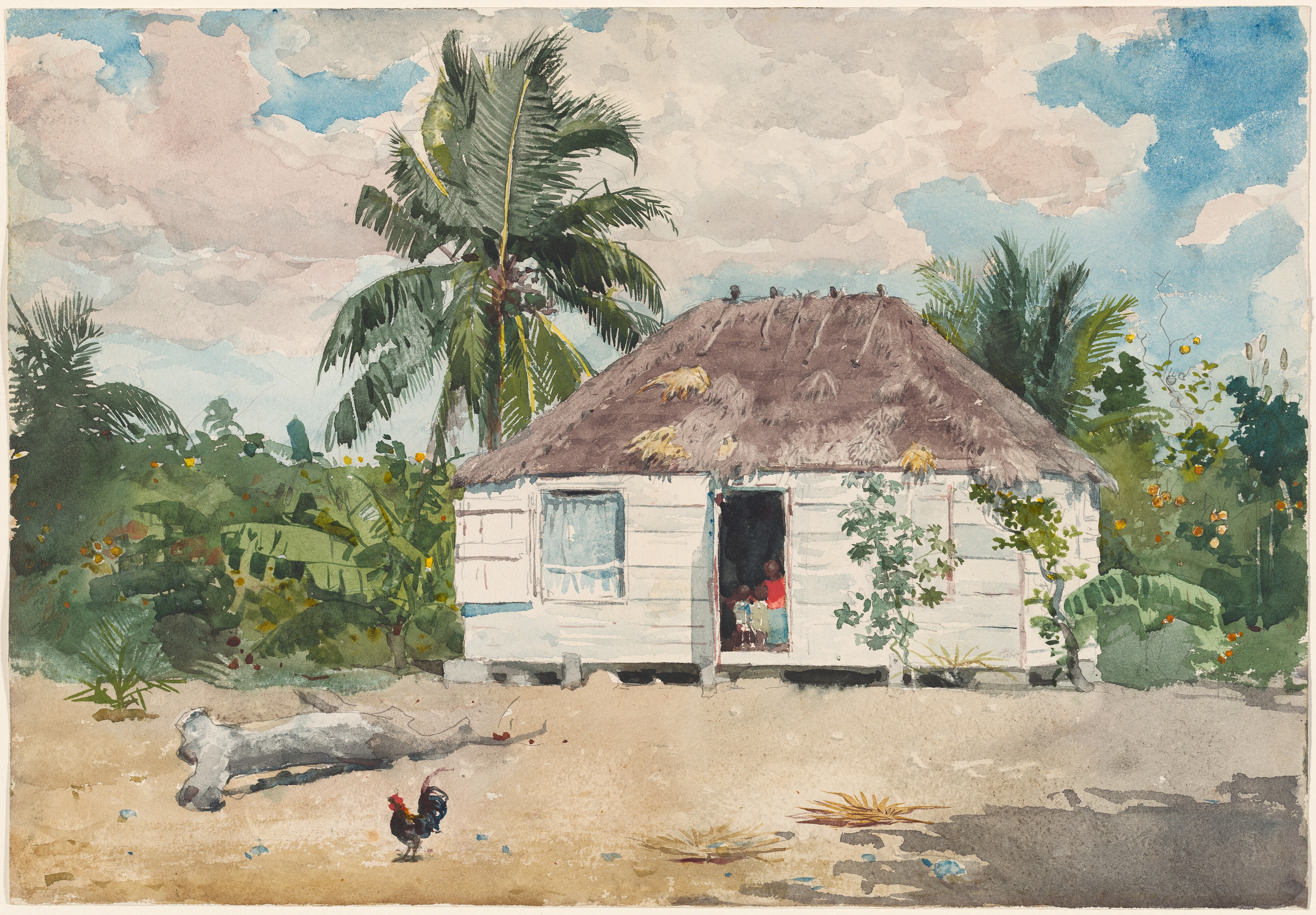
Homer first arrived in Nassau, the capital city of the Bahamas, with his father in December 1884. He was lured to the area, then a British Crown colony, by the tropical climate and pictorial possibilities. After settling into his luxury hotel, Homer explored the Black settlements outside the city. This watercolor of a Bahamian residence reveals a mix of African and European architectural traditions that reflects the hybrid cultures of the Caribbean and the legacy of slavery, which had been abolished there in 1838. By concentrating on picturesque details that he believed would appeal to viewers in the States—the thatched roof, the lush foliage (including a soaring coconut palm), a rooster, and a bright blue, cloud-filled sky—Homer aestheticized the structural racism and economic difficulties faced by Black Bahamians.
Shark Fishing - 1885
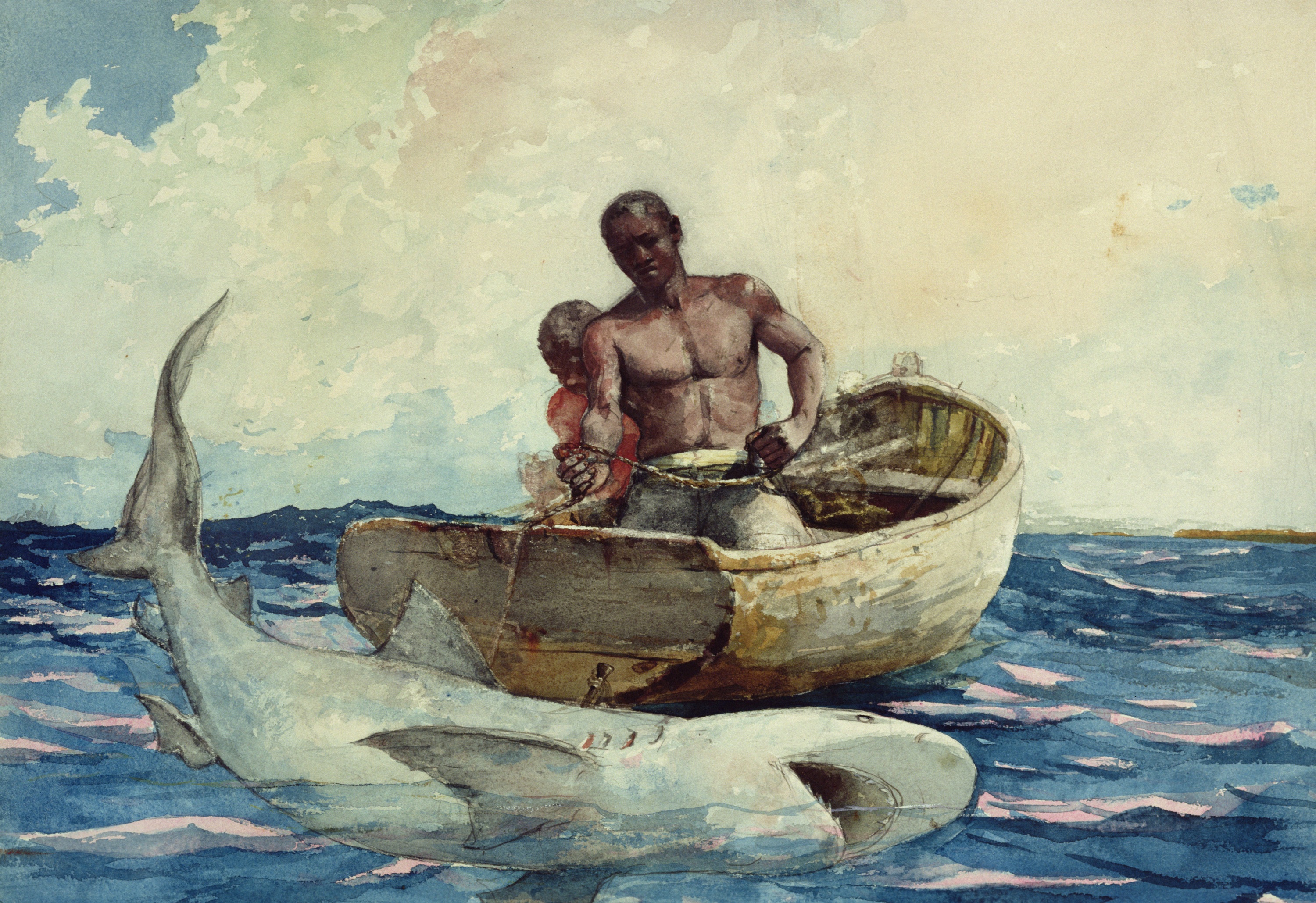
Homer was fascinated by the daily lives of Bahamians and made a series of watercolors showing them engaged in their work at sea. For islanders who made their living on the water, sharks were both prey and predator. A contest between humans and nature is captured in this scene of two fishermen attempting to reel in a large shark. During Homer’s visit to the Bahamas, the local newspaper reported that a shark “measuring about eleven feet” was caught and brought to the Royal Victoria Hotel—where the painter was staying—for inspection. A similarly posed shark appears in preparatory studies he made fifteen years later when developing the composition for The Gulf Stream.
Sponge Fishermen, Bahamas - 1885
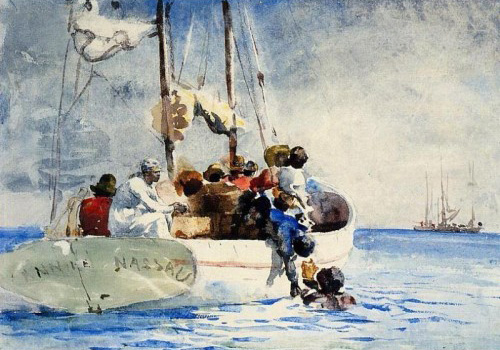
In the late nineteenth century, sponging was the main industry of the Bahamas. At its peak around 1900, about one-third of the total male Bahamian workforce was employed in the business, which exported over a million pounds of sponges per year, mainly to North America and Europe as popular bath items. Homer presents a distant view, likely of the Nassau Sponge Exchange, the epicenter of the islands’ trade. As Black fishermen return to port after an expedition, the White merchants survey the bountiful harvest from the dock. Homer’s sunlit composition, which takes place under brilliant blue skies and towering palms, is picturesque rather than critical and reveals no hint of the arduous conditions and meager wages.
The Turtle Pound - 1898
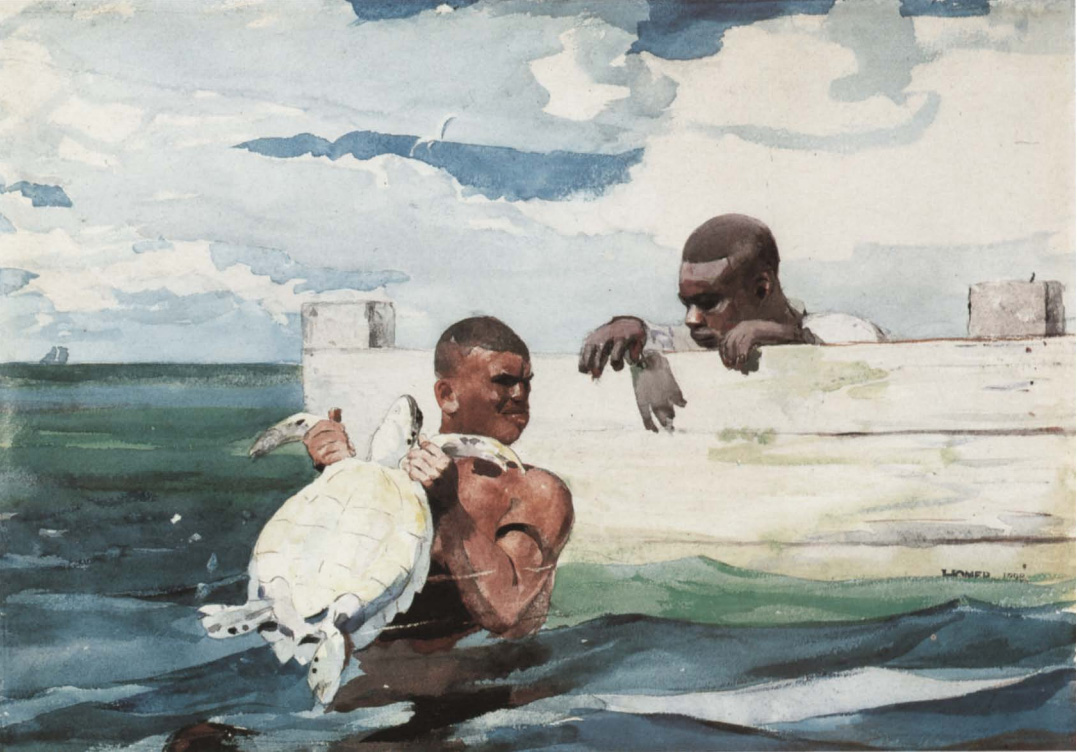
Compared to Homer’s watercolors from his first trip to the Bahamas, those from his second visit are painted with more confidence and immediacy. This bolder approach is especially evident in works where flowing pigment transforms into undulating waves of the sea, as in this image of two men transferring a turtle into a holding tank. Artist and viewer are level with the workers wrangling their prey in the turquoise water. Intense sunlight highlights the animal’s exposed underbelly. But the image is about more than the men’s labor. A traditional food of the West Indies, turtles had become a luxury delicacy for export to the United States and Britain over the course of the eighteenth and nineteenth centuries and were associated with empire.
The Bather - 1899
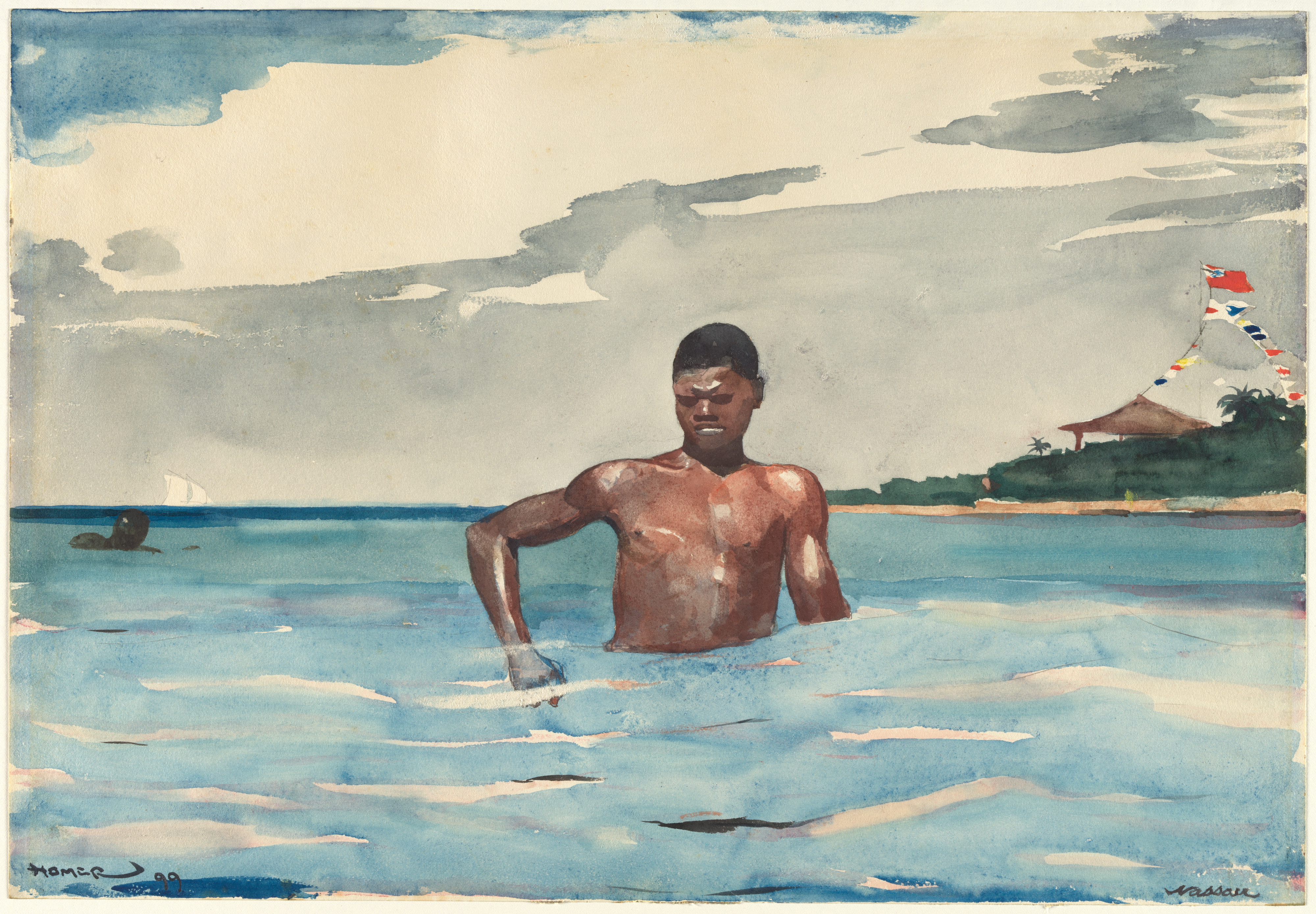
During his second visit to the Bahamas in 1898–99, Homer, then sixty-two years old, seems to have reveled in depicting the bodies of vigorous Black men glistening in warm water and sunlight. It is significant that Homer foregrounded these individuals’ strength and sensuality in his art, especially in the context of the Bahamas, which were promoted as a respite for sickly White tourists to regain their health. Inherent in the images is a tension related to racial politics and class disparities, as the older White artist recorded the robust young Black men. This apparent moment of leisure is situated beneath the Union Jack, an intentional reminder of the Bahamas’ position as a British Crown colony.
Nassau - 1899
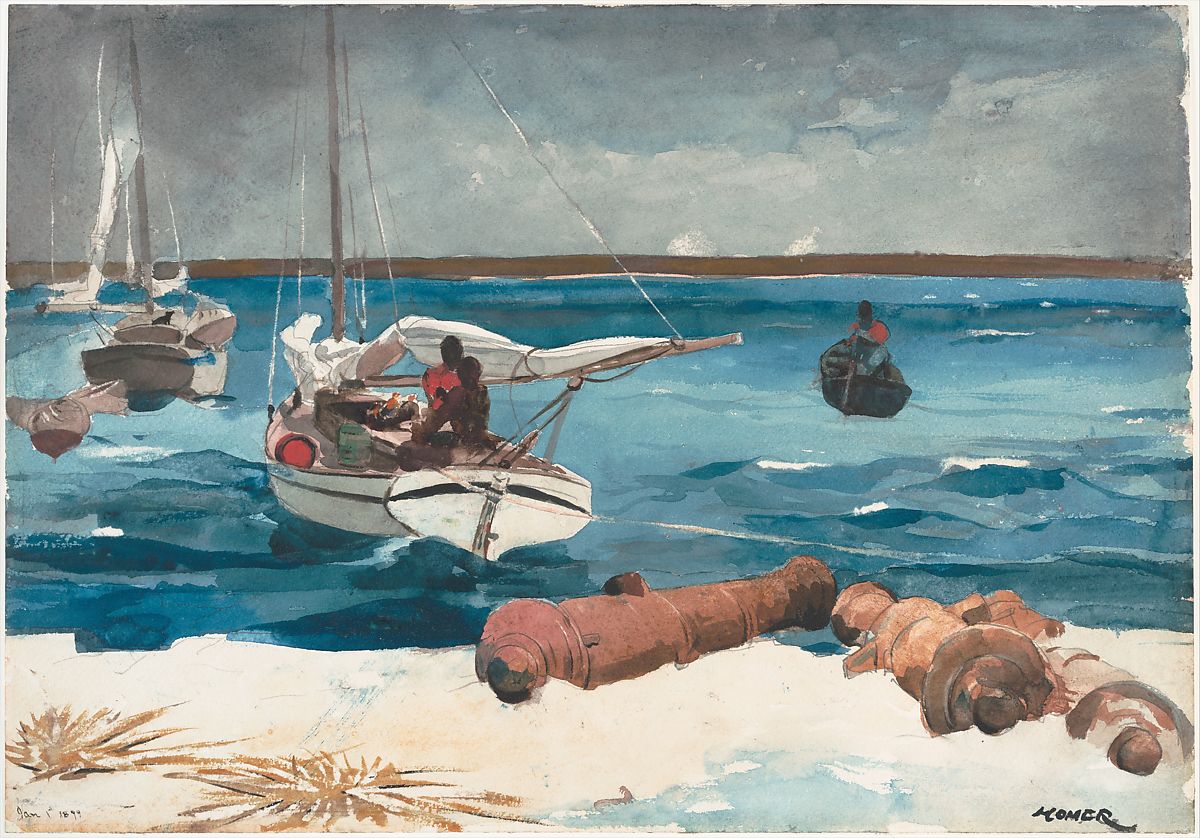
In this dazzling watercolor of Bahamian men either heading out to or returning from their work at sea, Homer included discarded cannons—artifacts from one of the island’s British forts—splayed across the beach. One contemporary guidebook noted that these symbols of colonial history had become tourist attractions. Homer’s interest in this imperial legacy corresponds to the increasing U.S. presence in the region and on the world stage. At lower left, the artist indicated that the watercolor was painted on January 1, 1899, a significant date. Under the provisions of the 1898 Treaty of Paris, which established the end of the Spanish-Cuban-American war, January 1 marked the day Spain relinquished control of Cuba and the United States began its military occupation of the island.
A Wall, Nassau - 1898
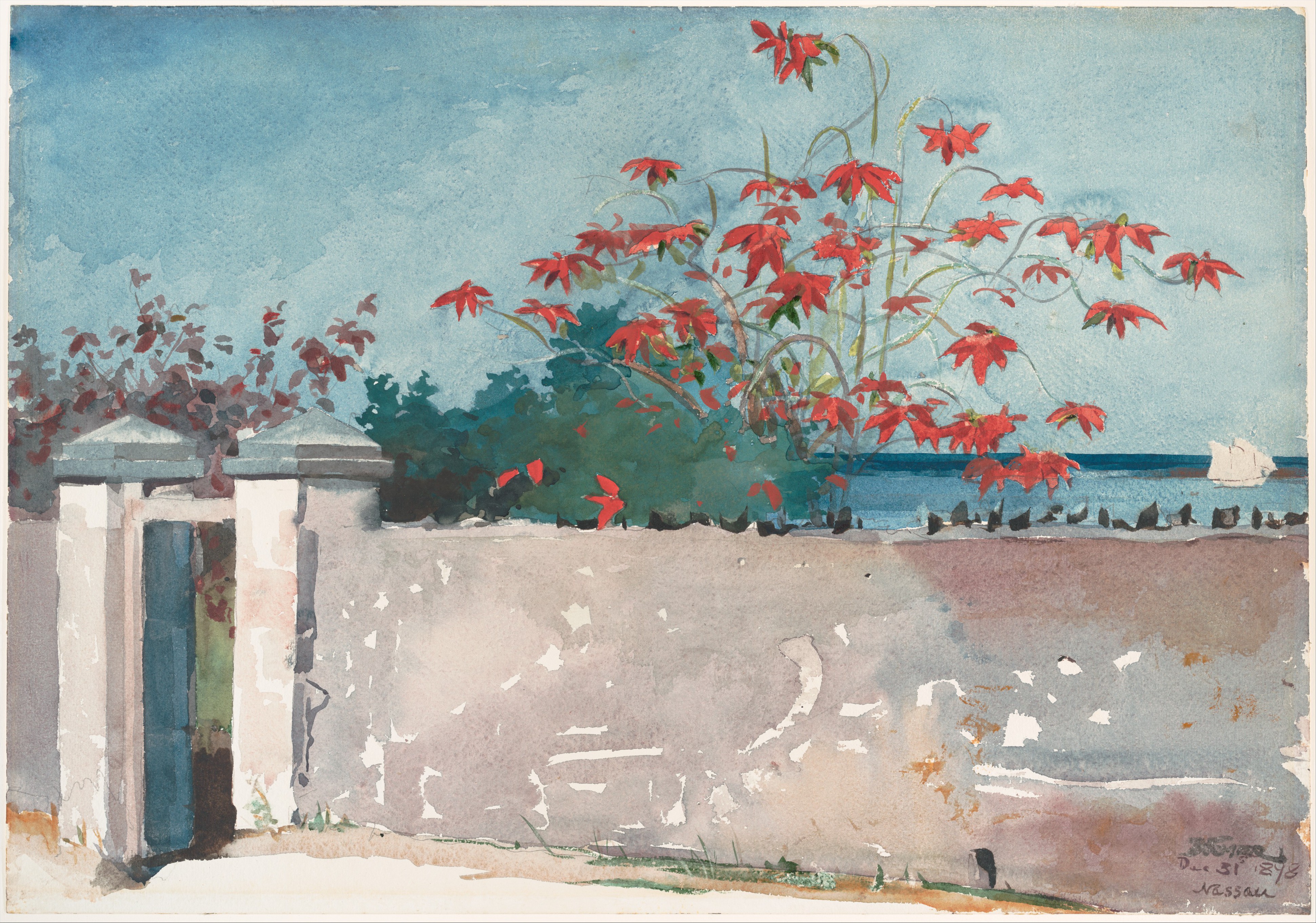
A Wall, Nassau recalls watercolors from Homer’s first journey to the Bahamas and demonstrates his continued interest in the boundaries between public and private spaces. The exuberant palette of the poinsettia blossoms, foliage, sky, and sea contrast with the pale washes the artist used to suggest sunlight and shadow across the characteristic wall. At left, the gate stands open, implying a welcoming human presence and offering a hint of the landscape beyond. With the dark shards of glass lining the top of the wall, however, Homer highlights barriers intended to deter trespassers.
The Gulf Stream - 1899 (reworked 1906)
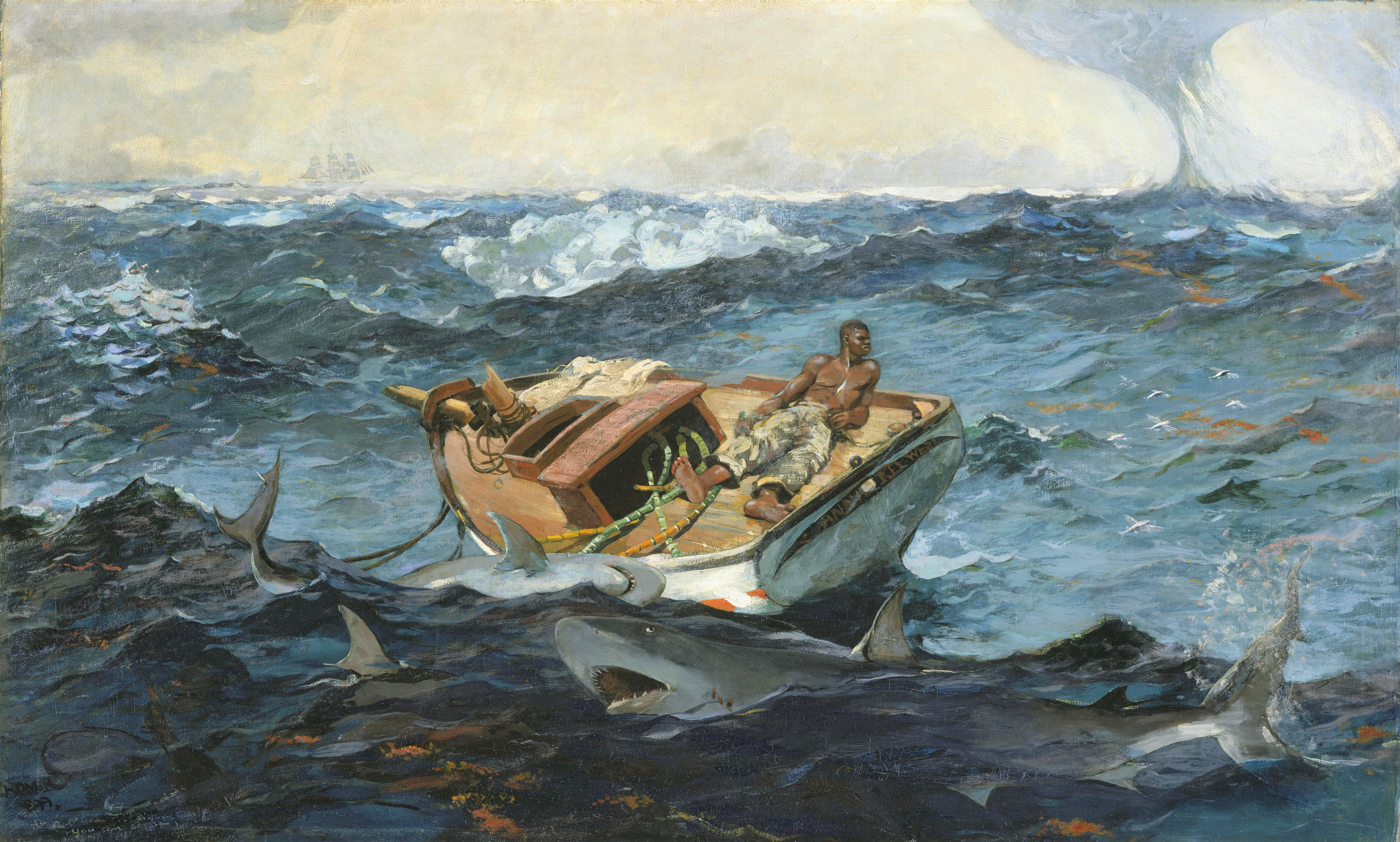
In Homer’s epic saga set along the Gulf Stream, a Black man faces his possible demise on the deck of a distressed boat while threatened by sharks and a waterspout. This painting is the culminating expression of various deeply personal and universal themes that Homer explored across his career, particularly the conflict between humans and the natural environment. Completed at the dawn of the twentieth century and during what historians have called the nadir of race relations in the United States, The Gulf Stream is also rich with geopolitical implications. Homer acknowledged the expanded imperial ambitions of the United States beyond North America with the addition of key elements. Splayed across the ship’s deck are stalks of sugarcane—the Caribbean commodity central to the economy of empire and directly linked to the swift ocean current of the title, which enabled its trade, and the devastating history of transatlantic slavery. Homer interweaves these complicated narratives in a painting that confronts human struggle, personified by a stoic survivor, against the relentless power of nature.
Source: Images and descriptions from The Met exhibition “Winslow Homer: Crosscurrents”
